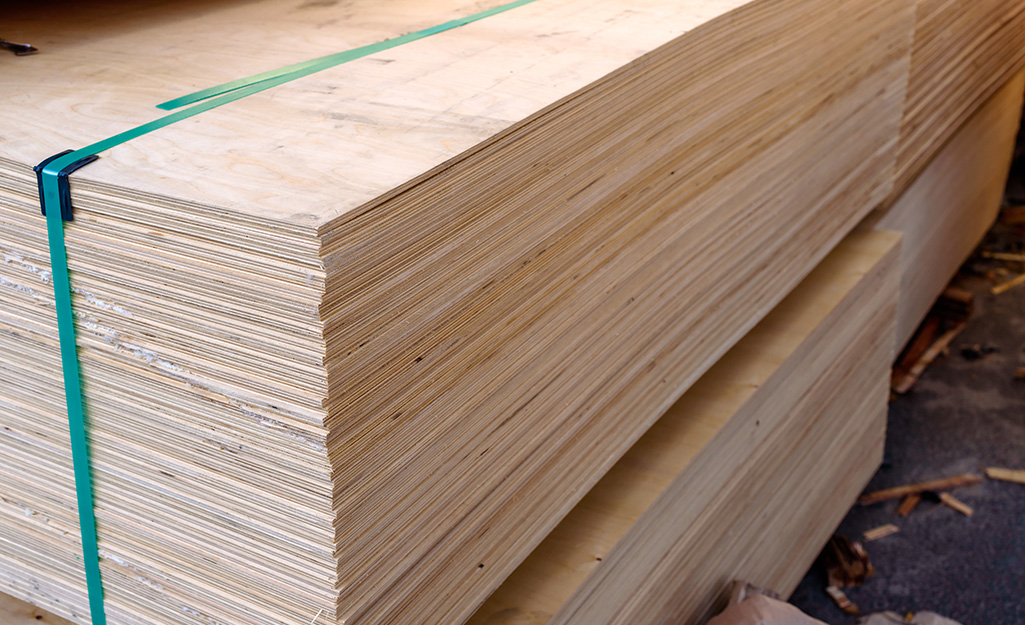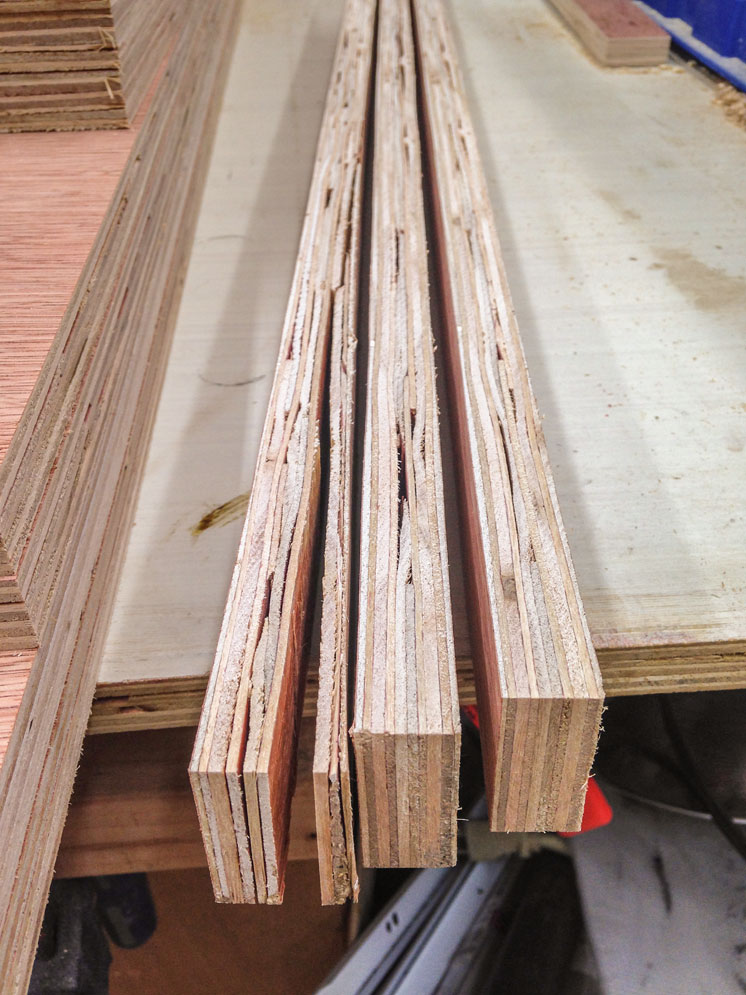When it comes to home improvement projects, finding affordable materials is key. So, is plywood cheap or expensive? Let’s dive right in and explore the cost of this versatile construction material.
Plywood is a popular choice for builders and DIY enthusiasts alike. But is it budget-friendly or will it break the bank? We’ll discuss the factors that influence plywood pricing, helping you make an informed decision for your next project.
From understanding the different types of plywood to exploring the impact of quality and size on its price, we’ll cover all the ins and outs of plywood costs. So, whether you’re planning a small renovation or a major construction project, let’s unravel the mystery behind the price tag of plywood.
When it comes to plywood, the price can vary depending on several factors. Plywood is generally considered an affordable option for construction and woodworking projects compared to other types of wood. However, the cost can still vary based on the plywood grade, thickness, size, and location. It’s important to do some research and compare prices to find the best deal for your specific project needs.

Is Plywood Cheap or Expensive?
In the world of construction and woodworking, plywood is undoubtedly a popular choice. But is it affordable or will it burn a hole in your wallet? Let’s delve into the factors that influence the price of plywood and whether it can be considered cheap or expensive.
The Cost Factors of Plywood
When determining the cost of plywood, several factors come into play. One of the primary factors is the type of wood used in its construction. Plywood sheets can be made from softwoods like pine, hardwoods like oak, or even exotic woods. The type of wood affects both the quality and price of the plywood.
Another cost factor is the thickness of the plywood. Thicker plywood tends to be more expensive, as it requires more raw material and additional processing to create. The quality and number of plies, or layers, also impact the price. Plywood with more plies is generally stronger and pricier than plywood with fewer layers. Additionally, the grade of plywood, such as A, B, or C, affects its price, with higher grades commanding higher costs.
Lastly, market demand and location can influence the price of plywood. If the demand for plywood is high, the price is likely to increase. Similarly, transportation costs and the availability of certain wood species in specific regions can affect the price of plywood.
Types of Plywood and Their Costs
Plywood comes in various types, each with its own cost range. Here are a few commonly used types of plywood and their approximate costs:
- Birch Plywood:
- Birch plywood is known for its strength, durability, and attractive appearance. It is often used in furniture making and cabinetry. The price of birch plywood ranges from $30 to $100 per sheet.
- Marine Plywood:
- As the name suggests, marine plywood is designed specifically for use in water-related applications. It is highly resistant to moisture and rot, making it ideal for boats, docks, and outdoor furniture. Marine plywood typically costs between $70 and $200 per sheet.
- Oak Plywood:
- Oak plywood is a hardwood plywood that boasts excellent strength and durability. It is commonly used in architectural woodworking, cabinetry, and furniture construction. The price of oak plywood ranges from $40 to $120 per sheet.
Comparing Plywood to Other Building Materials
When considering the cost of plywood, it’s essential to compare it to other building materials. While plywood may seem more expensive than alternatives like particleboard or medium-density fiberboard (MDF), its superior strength and durability make it a worthy investment.
Particleboard and MDF, although cheaper upfront, are susceptible to moisture damage and lack the structural integrity of plywood. Therefore, the long-term cost-effectiveness of plywood outweighs the initial price difference.
However, when compared to solid wood boards, plywood is often more cost-effective, as solid wood can be significantly more expensive due to the larger amount of raw material required.
Tips for Cost-Effective Plywood Shopping
If you’re looking to save money on plywood without compromising on quality, consider the following tips:
- Buy in bulk: Purchasing plywood in larger quantities can often lead to discounts from suppliers.
- Look for sales or promotions: Keep an eye out for seasonal sales or promotional offers from local hardware stores.
- Consider grade C plywood for non-visible areas: If the appearance of the plywood is not a factor, opting for a lower-grade plywood can help reduce costs.
- Compare prices from different suppliers: Shopping around and comparing prices from various suppliers can help you find the best deals.
Conclusion
Plywood can be both cheap and expensive, depending on various factors such as wood type, thickness, and grade. It’s important to consider the specific needs of your project, and whether the added cost of plywood is justified by its superior strength and durability. By comparing prices, understanding the different types of plywood available, and taking advantage of cost-saving measures, you can make an informed decision and strike the right balance between affordability and quality.
Key Takeaways: Is Plywood Cheap or Expensive?
- Plywood is generally considered to be an affordable building material.
- Price of plywood can vary based on factors such as quality, thickness, and grade.
- Low-grade plywood tends to be cheaper, while high-grade plywood can be more expensive.
- Plywood prices can also differ depending on the region and availability.
- It’s important to compare prices and quality before making a purchase.
Frequently Asked Questions
Looking for answers about the affordability of plywood? Check out these commonly asked questions:
1. Is plywood cost-effective for home improvement projects?
Yes, plywood is generally considered a cost-effective material for home improvement projects. Compared to solid wood, plywood offers a more budget-friendly option without compromising on durability. It is versatile and can be used in various applications, such as constructing furniture, cabinetry, or flooring. Additionally, plywood is available in different grades, allowing you to choose the most suitable option to fit your budget.
However, it’s important to note that the actual cost of plywood can vary depending on factors like the grade, thickness, and the specific location or store where you make your purchase. Comparing prices from different suppliers can help you find the best deal for your project.
2. How does the cost of plywood compare to other building materials?
Plywood tends to be more affordable than many other building materials, including solid wood, engineered wood, or metal. It offers a balance between cost and quality, making it a popular choice for construction projects. While the price of plywood may be a bit higher than some synthetic alternatives, such as particleboard or MDF (medium-density fiberboard), plywood offers superior strength and durability, making it a worthwhile investment.
Additionally, the longevity of plywood can make it more cost-effective in the long run. With proper care and maintenance, plywood can withstand years of use, reducing the need for frequent replacements.
3. Are there any situations where plywood may be considered expensive?
In certain cases, plywood may be perceived as expensive, depending on the specific requirements of your project and your budget constraints. For example, if you’re working on a small-scale project that doesn’t require the use of a large amount of plywood, the cost per square foot can be higher due to the fixed expenses associated with purchasing smaller quantities.
Additionally, if you opt for high-grade plywood or specialty plywood with unique features like moisture resistance or fire resistance, the cost may be higher compared to standard plywood options. However, keep in mind that these specialized features can offer added benefits and justify the higher price tag in specific applications.
4. Can I find affordable plywood options without sacrificing quality?
Absolutely! While plywood prices can vary, there are ways to find affordable options without compromising on quality. One approach is to consider lower-grade plywood. While it may have more visible imperfections or slightly lower strength, it can still serve well for many projects, especially if appearance is not a primary concern. Additionally, shopping around and comparing prices from different suppliers can help you find the best deals.
Another option is to consider using plywood panels with veneer. Veneered plywood is made by attaching a thin layer of high-quality wood to the surface of lower-grade plywood, allowing you to achieve a more desirable appearance without the hefty price tag of solid wood.
5. How can I maximize the cost-effectiveness of plywood?
To maximize the cost-effectiveness of plywood, proper planning and efficient utilization of the material are key. Before starting your project, carefully measure the required dimensions and estimate the quantity of plywood you’ll need. Wasting excess material can unnecessarily increase costs.
Furthermore, consider optimizing the layout of your plywood cuts to minimize waste. By strategically arranging your cuts on the plywood sheets, you can make the most out of each piece, reducing your overall material expenses. Planning ahead and being mindful of efficient material usage can help you make the most of your plywood investment.

5 Mistakes Buying Plywood – Don’t Waste Your Money!
Summary
Plywood can be both cheap and expensive, depending on various factors. The cost of plywood varies based on its grade, thickness, and the type of wood used. Generally, plywood made from softwood like pine is cheaper, while hardwood plywood is more expensive. Additionally, the quality and appearance of plywood can impact its price.
However, it’s important to consider the intended use of plywood before determining its value. While cheaper plywood may be suitable for certain projects like temporary structures or rough construction work, more expensive and higher-grade plywood is recommended for projects that require strength, durability, and a better finish. Ultimately, the cost of plywood depends on your needs and budget.
